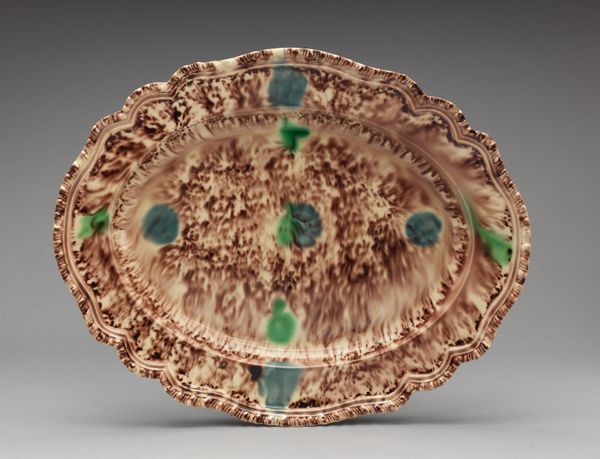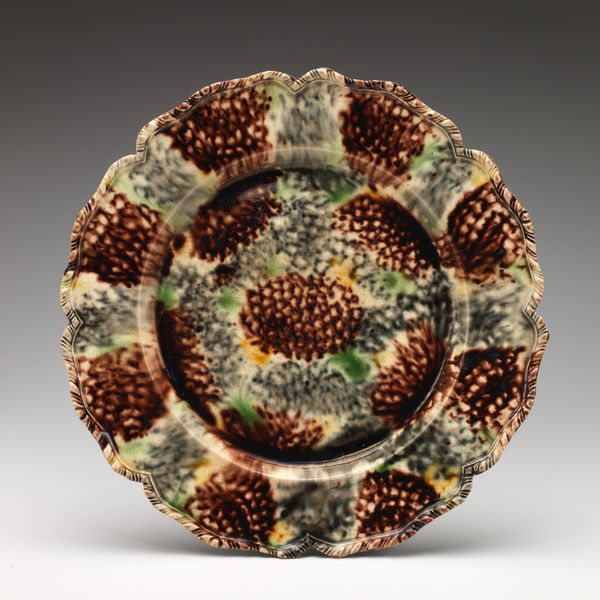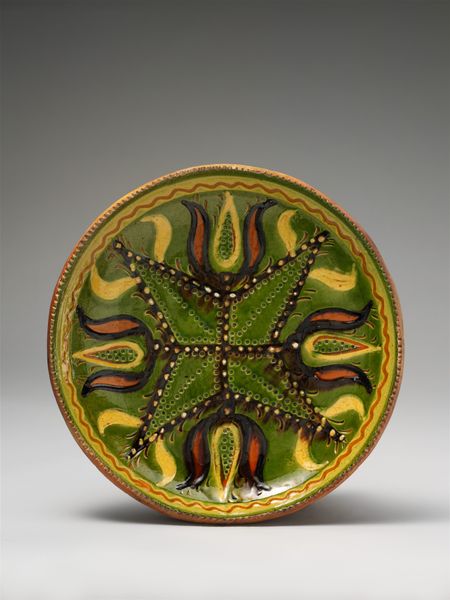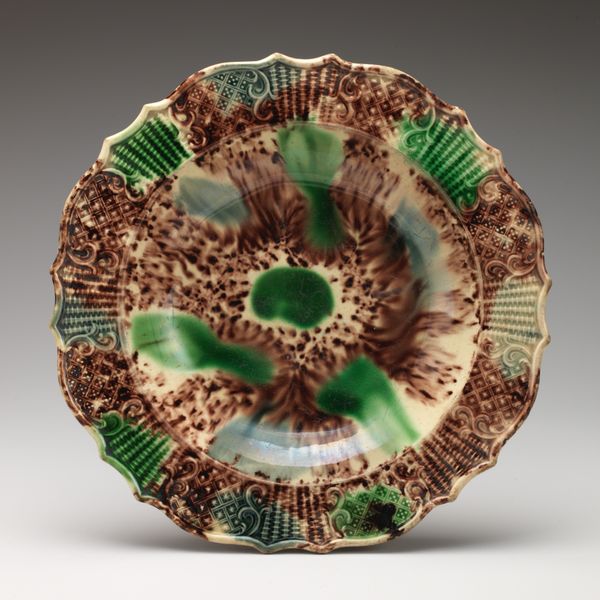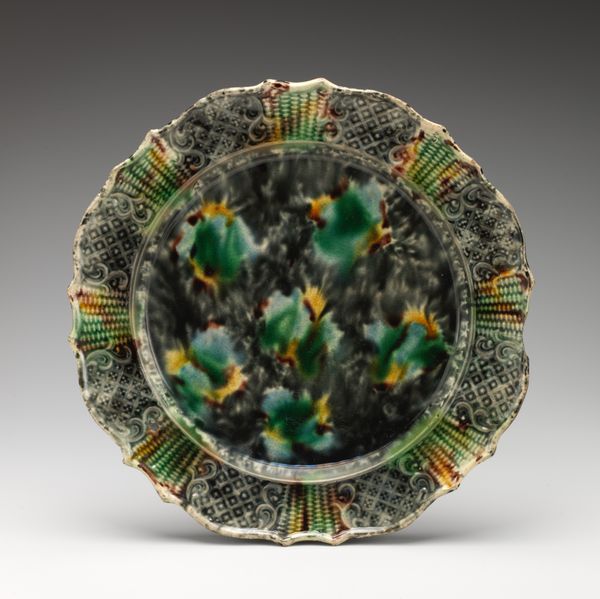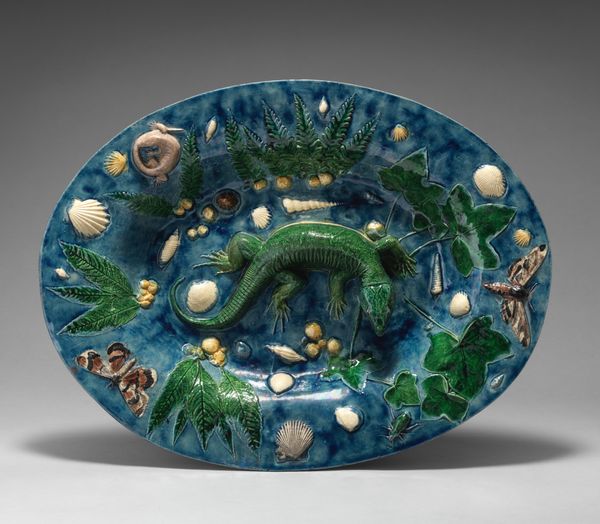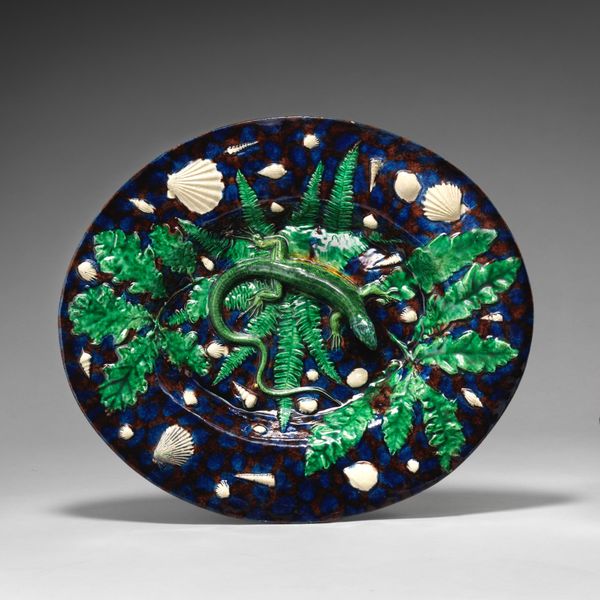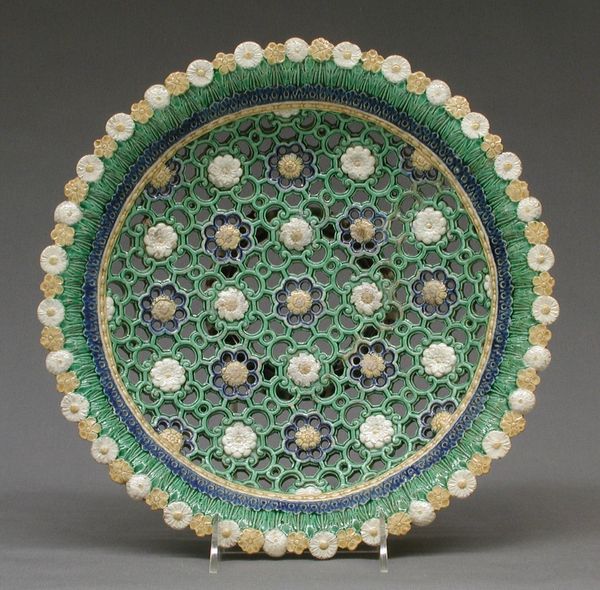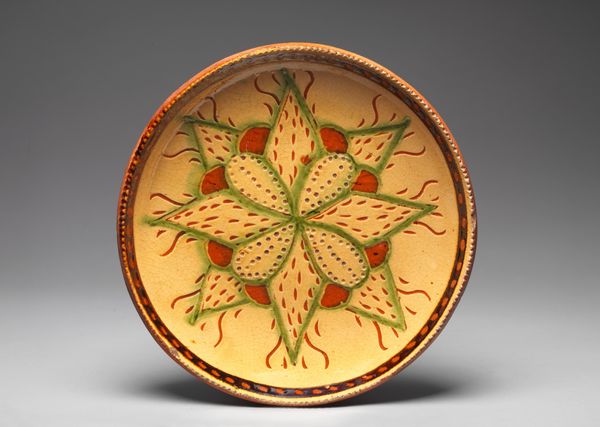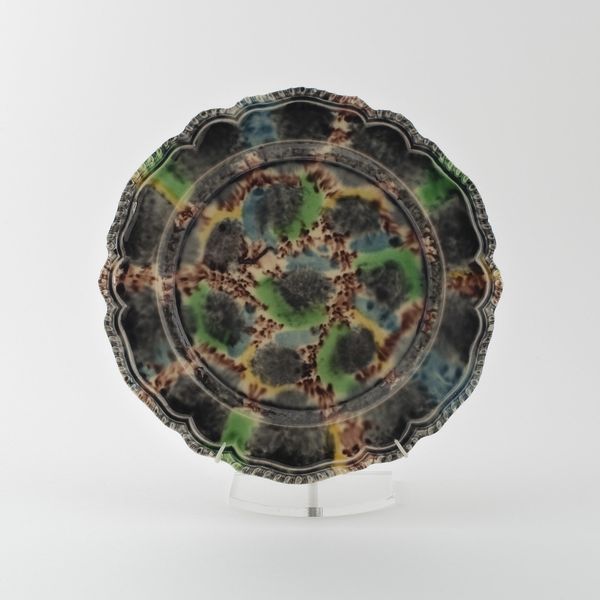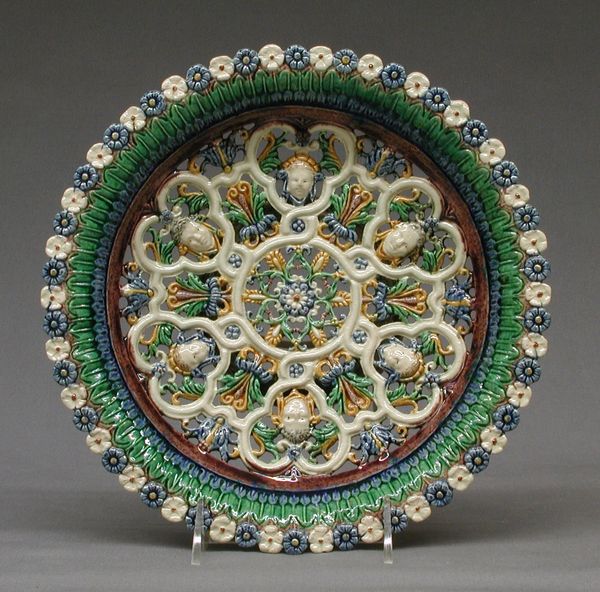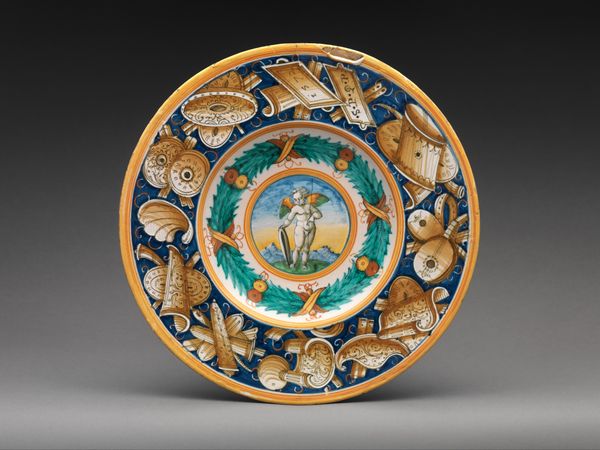
ceramic, earthenware, sculpture
#
ceramic
#
earthenware
#
stoneware
#
sculpture
#
ceramic
#
decorative-art
Dimensions: Diameter: 9 3/4 in. (24.8 cm)
Copyright: Public Domain
Curator: Let’s take a look at this striking plate, dating back to between 1775 and 1799. It's currently housed at the Metropolitan Museum of Art, identified as an example of Whieldon-type earthenware. Editor: Oh, wow, I immediately notice the colour palette; earthy greens and blues with speckles of brown create this somewhat mottled texture that grabs your attention right away! It’s more raw and less refined than you would expect. Curator: Indeed, that "rawness" speaks volumes about the socio-economic contexts of its production. This Whieldon-type ware was innovative for its time, aiming for aesthetic appeal while still catering to a growing consumer market. Editor: I can see the hand of the artisan in the irregular patterns, revealing the inherent variability of the ceramic materials themselves. The labor involved—mixing the clay, applying the colors—all contribute to this plate's uniqueness. Were they consciously going for that aesthetic? Curator: It was less about a conscious artistic choice and more about adapting production methods to meet demand. Factories and workshops during this era operated within certain constraints but also allowed for creativity. Consider how these types of ceramics began to occupy middle-class tables, reflecting societal aspirations and accessible artistry. Editor: It also pushes against the formal traditions usually highlighted, offering instead a form rooted in accessible beauty through labor. The textured surface and slight imperfections underscore this connection to process— almost celebrating it! It's also a good insight into the availability and preparation of raw materials during that period, what they could achieve with earthenware. Curator: Absolutely, its charm isn’t found in flawless precision, but instead the opposite: it provides insight into evolving markets for ceramics and what that meant in everyday life, outside of purely decorative use. This plate reminds us of the intersection between production, consumption, and the art that graces ordinary households. Editor: Reflecting on this piece, I am now much more fascinated with the process of its making; I’m also wondering about how plates such as this were considered decorative or functional…maybe both, truly democratizing the function of "art".
Comments
No comments
Be the first to comment and join the conversation on the ultimate creative platform.
